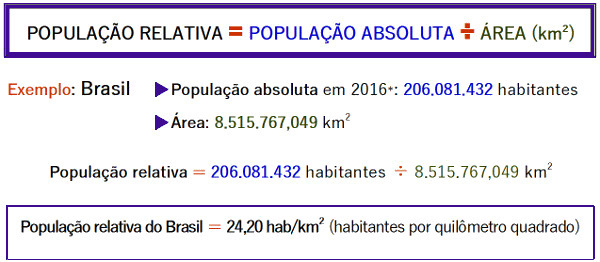The United Nations Development Program (UNDP), an agency linked to the United Nations (UN), is responsible for analyzing the Human Development Index (HDI) of countries. This data expresses the quality of life of a given population, and uses the following aspects as a criterion for calculating:
- Level of education: average years of study of the adult population and school life expectancy, or time a child will be enrolled.
- Income: Gross National Income (GNI) per capita, based on the purchasing power parity of the inhabitants. This item was based on GDP (Gross Domestic Product) per capita, however, as of 2010, it was replaced by Gross National Income (RNB) per capita, which evaluates practically the same aspects as the GDP, however, the RNB also considers the financial resources from the outside.
- Health level: based on the population's life expectancy; reflects the health conditions and environmental sanitation services.
These three items were added together and the final result was divided by three. However, as of 2010, a new method started to be used, where the final result of the HDI is obtained through the geometric mean of the three items analyzed, that is, the three items are multiplied and the cubic root of the result.
The averages range from 0 to 1, and the closer to 0, the lower the HDI for a given country. Countries that are among the 25% worst averages are considered to have a low HDI. According to the world ranking released in 2014 by the UN, 33 nations have a low Human Development Index. Check the list of countries with low HDI:
Do not stop now... There's more after the advertising ;)
153. Madagascar: 0.498 (Africa)
154. Zimbabwe: 0.492 (Africa)
155. Solomon Islands: 0.491 (Oceania)
156. Papua New Guinea: 0.491 (Oceania)
157. Comoros: 0.488 (Africa)
158. Tanzania: 0.488 (Africa)
159. Mauritania: 0.487 (Africa)
160. Lesotho: 0.486 (Africa)
161. Senegal: 0.485 (Africa)
162. Uganda: 0.484 (Africa)
163. Benin: 0.476 (Africa)
164. Sudan: 0.473 (Africa)
165. Togo: 0.473 (Africa)
166. Haiti: 0.471 (Central America)
167. Afghanistan: 0.468 (Asia)
168. Djibouti: 0.467 (Africa)
169. Côte d'Ivoire: 0.452 (Africa)
170. Gambia: 0.441 (Africa)
171. Ethiopia: 0.435 (Africa)
172. Malawi: 0.414 (Africa)
173. Liberia: 0.412 (Africa)
174. Mali: 0.407 (Africa)
175. Guinea-Bissau: 0.396 (Africa)
176. Mozambique: 0.393 (Africa)
177. Guinea: 0.392 (Africa)
178. Burundi: 0.389 (Africa)
179. Burkina Faso: 0.388 (Africa)
180. Eritrea: 0.381 (Africa)
181. Sierra Leone: 0.374 (Africa)
182. Chad: 0.372 (Africa)
183. Central African Republic: 0.341 (Africa)
184. Democratic Republic of Congo: 0.338 (Africa)
185. Niger: 0.337 (Africa)
When analyzing the list, it is clear that the African continent holds the worst positions in the ranking (28 countries, among the 33, are from Africa), factors such as low economic development, high rates of illiteracy and child mortality, as well as diseases such as AIDS and malaria, contribute to this scenery.
By Wagner de Cerqueira and Francisco
Graduated in Geography
Brazil School Team


